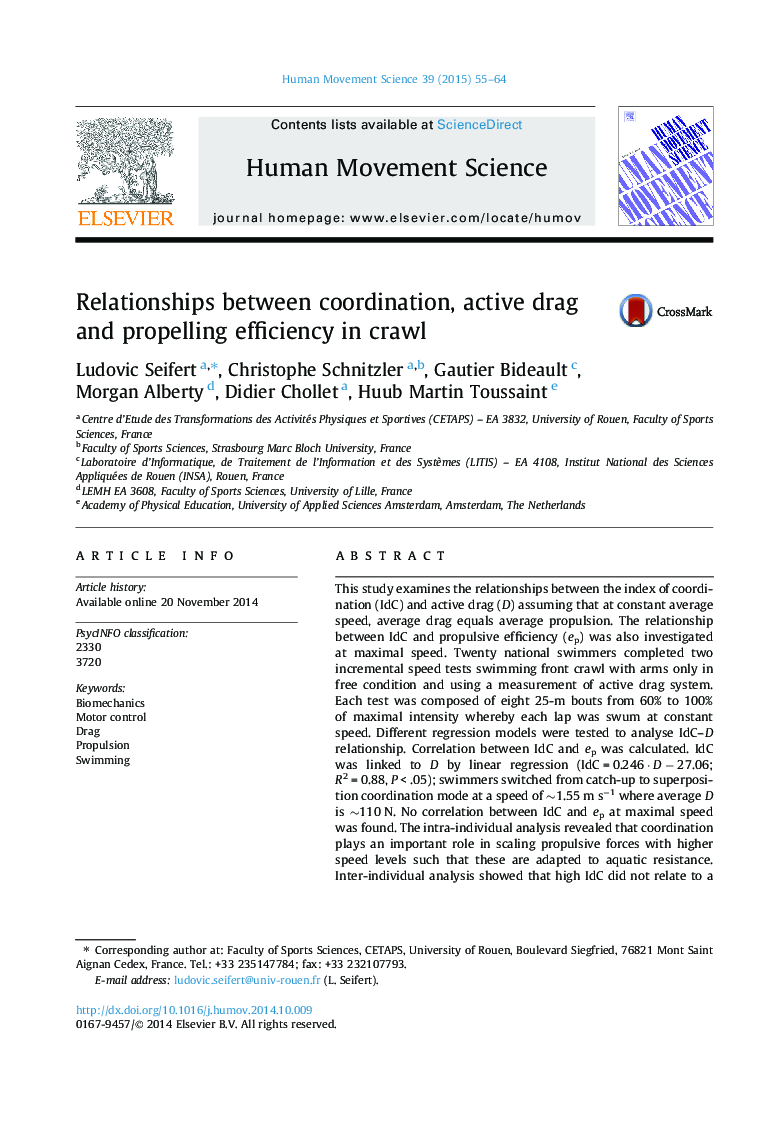| Article ID | Journal | Published Year | Pages | File Type |
|---|---|---|---|---|
| 928288 | Human Movement Science | 2015 | 10 Pages |
•No correlation between arm coordination and propulsive efficiency exists at maximal speed.•Arm coordination was linked to active drag by linear regression.•Arm coordination switch from catch-up to superposition mode at a speed of 1.55 m s−1 where active drag is 110 N.
This study examines the relationships between the index of coordination (IdC) and active drag (D) assuming that at constant average speed, average drag equals average propulsion. The relationship between IdC and propulsive efficiency (ep) was also investigated at maximal speed. Twenty national swimmers completed two incremental speed tests swimming front crawl with arms only in free condition and using a measurement of active drag system. Each test was composed of eight 25-m bouts from 60% to 100% of maximal intensity whereby each lap was swum at constant speed. Different regression models were tested to analyse IdC–D relationship. Correlation between IdC and ep was calculated. IdC was linked to D by linear regression (IdC = 0.246 · D − 27.06; R2 = 0.88, P < .05); swimmers switched from catch-up to superposition coordination mode at a speed of ∼1.55 m s−1 where average D is ∼110 N. No correlation between IdC and ep at maximal speed was found. The intra-individual analysis revealed that coordination plays an important role in scaling propulsive forces with higher speed levels such that these are adapted to aquatic resistance. Inter-individual analysis showed that high IdC did not relate to a high ep suggesting an individual optimization of force and power generation is at play to reach high speeds.
